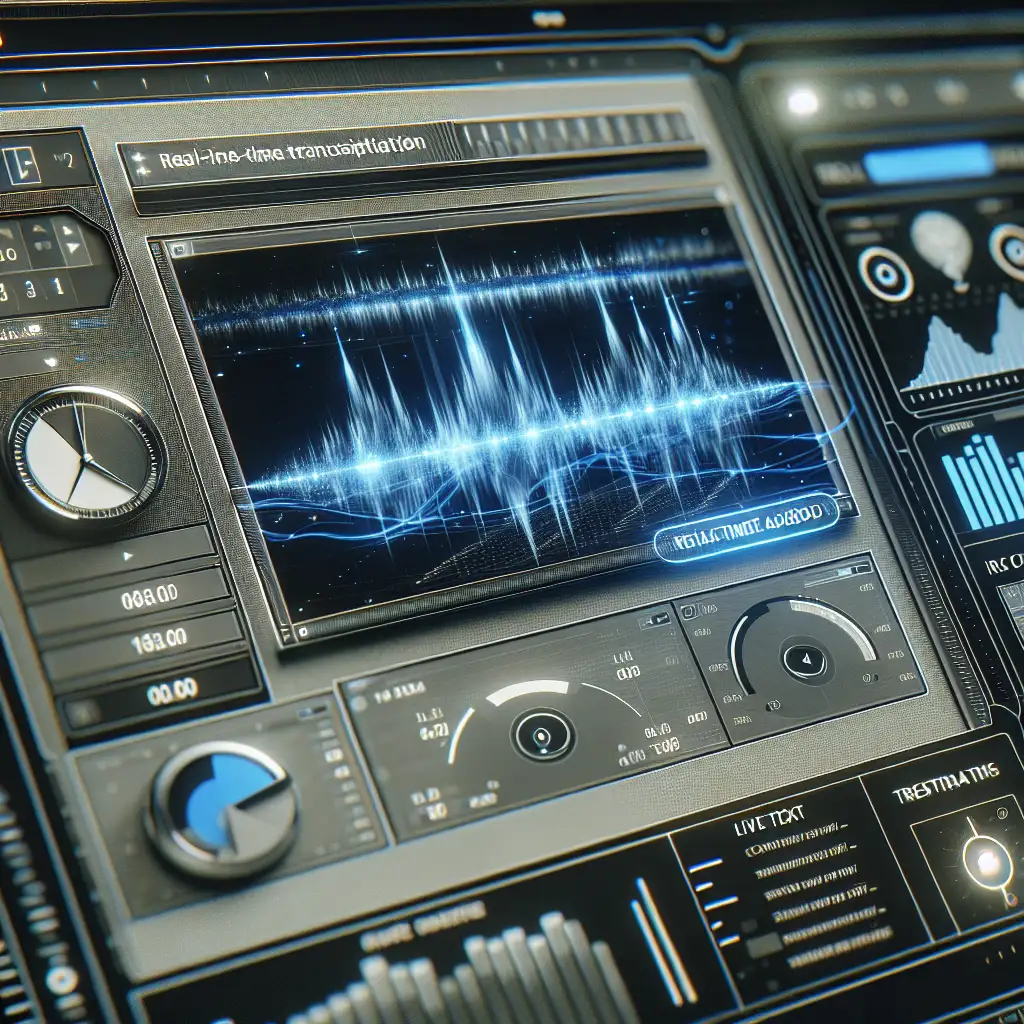Mastering Real-Time Audio Transcription with Google Cloud Speech-to-Text: A Step-by-Step Tutorial
Forget bulky, inaccurate transcription tools—learn how Google Cloud Speech-to-Text lets you build sleek, reliable real-time transcription features that scale across industries without traditional headaches. Accurately converting spoken language to text in real-time is a game-changer for accessibility, automated workflows, and data analysis. Mastering this capability with Google Cloud’s robust API empowers developers to build more inclusive and interactive applications efficiently.
In this post, I’ll walk you through the practical steps of setting up and using Google Cloud Speech-to-Text for real-time audio transcription. Whether you’re looking to add live captions to video calls, create voice-driven apps, or analyze customer service calls as they happen, this tutorial will get you started with clean, working code examples.
What is Google Cloud Speech-to-Text?
Google Cloud Speech-to-Text is an advanced API that converts audio into written text by leveraging deep learning neural networks. It supports over 125 languages and variants and can process both prerecorded audio files and streaming audio in real-time. Its standout features include:
- Real-time streaming transcription
- Automatic punctuation
- Speaker diarization (identifying who’s speaking)
- Word-level timestamps
- Noise robustness
This makes it ideal for building solutions in accessibility (live captioning), customer service monitoring, voice commands, dictation apps, and more.
Prerequisites
Before we dive into code:
- Google Cloud account: If you don’t have one, sign up here.
- Enable Speech-to-Text API: Go to the Google Cloud Console and enable the API for your project.
- Set up authentication: Create a Service Account with the
Speech-to-Text Userrole and download the JSON credentials file. - Install
gcloudCLI (optional but helpful): To authenticate usinggcloud auth application-default login. - Development environment: We'll use Python in this example.
Step 1: Installing Required Libraries
The official Google Cloud SDK provides client libraries for multiple languages. For Python:
pip install google-cloud-speech
Step 2: Setting Up Authentication
Make sure your application can authenticate properly with the credentials JSON.
On Linux/macOS:
export GOOGLE_APPLICATION_CREDENTIALS="/path/to/your/credentials.json"
On Windows (PowerShell):
setx GOOGLE_APPLICATION_CREDENTIALS "C:\path\to\your\credentials.json"
Restart your terminal after setting this variable.
Step 3: Writing Code to Stream Audio in Real-Time
Here’s a simplified example of how you can transcribe microphone audio live using the Google Cloud Speech-to-Text streaming API.
You’ll need pyaudio to access microphone input:
pip install pyaudio
Example: Real-Time Microphone Transcription (Python)
import pyaudio
from six.moves import queue
from google.cloud import speech
# Audio recording parameters
RATE = 16000
CHUNK = int(RATE / 10) # 100ms
class MicrophoneStream:
"""Opens a recording stream as a generator yielding audio chunks."""
def __init__(self, rate, chunk):
self._rate = rate
self._chunk = chunk
self._buff = queue.Queue()
self.closed = True
def __enter__(self):
self._audio_interface = pyaudio.PyAudio()
self._audio_stream = self._audio_interface.open(
format=pyaudio.paInt16,
channels=1,
rate=self._rate,
input=True,
frames_per_buffer=self._chunk,
stream_callback=self._fill_buffer,
)
self.closed = False
return self
def __exit__(self, type, value, traceback):
self._audio_stream.stop_stream()
self._audio_stream.close()
self.closed = True
self._buff.put(None)
self._audio_interface.terminate()
def _fill_buffer(self, in_data, frame_count, time_info, status_flags):
"""Continuously collect data from the audio stream."""
self._buff.put(in_data)
return None, pyaudio.paContinue
def generator(self):
while not self.closed:
chunk = self._buff.get()
if chunk is None:
return
data = [chunk]
# Grab any additional data available up to now.
while True:
try:
chunk = self._buff.get(block=False)
if chunk is None:
return
data.append(chunk)
except queue.Empty:
break
yield b"".join(data)
def listen_print_loop(responses):
"""Iterate through server responses and print them."""
for response in responses:
if not response.results:
continue
result = response.results[0]
if not result.alternatives:
continue
transcript = result.alternatives[0].transcript
if result.is_final:
print(f"Final transcript: {transcript}\n")
else:
print(f"Interim transcript: {transcript}", end="\r")
def main():
client = speech.SpeechClient()
# Configure recognition request with parameters suited for streaming mic input.
config = speech.RecognitionConfig(
encoding=speech.RecognitionConfig.AudioEncoding.LINEAR16,
sample_rate_hertz=RATE,
language_code="en-US",
enable_automatic_punctuation=True,
)
streaming_config = speech.StreamingRecognitionConfig(
config=config,
interim_results=True,
)
with MicrophoneStream(RATE, CHUNK) as stream:
audio_generator = stream.generator()
requests = (
speech.StreamingRecognizeRequest(audio_content=content)
for content in audio_generator
)
responses = client.streaming_recognize(streaming_config, requests)
listen_print_loop(responses)
if __name__ == "__main__":
main()
How It Works:
MicrophoneStreamcaptures audio from your mic and yields it in chunks.- The client streams those chunks to Google’s API using
streaming_recognize. - Interim results (partial transcripts) update live; final results print once more certain.
- Automatic punctuation helps produce readable sentences on the fly.
Step 4: Enhancing Your Application (Optional Tips)
Enable Speaker Diarization
If working with multi-person audio (meetings or call centers), you can add speaker labeling:
config.speaker_diarization_config.speaker_count = 2 # Set expected speakers count here.
config.enable_speaker_diarization=True
Note: Speaker diarization currently better supports prerecorded audio; streaming support may be limited or experimental.
Use Different Languages or Models
Google supports many languages; just change language_code accordingly (e.g., "es-ES" for Spanish).
You can also use enhanced models offering higher accuracy:
config.model = "video" # Or 'phone_call', 'command_and_search'
Common Pitfalls & Troubleshooting Tips
- Mic access permission errors: Ensure your OS allows terminal or IDE access to microphone.
- Incorrect sample rates: Match your mic recording setup exactly with
sample_rate_hertz. - Authentication failures: Double-check path correctness of your credentials JSON export.
- Latency issues: Network connectivity affects real-time experience; test on stable internet.
Wrapping Up
Adding real-time transcription via Google Cloud’s Speech-to-Text API is easier than ever once you get your environment set up correctly. This tutorial gave you a complete path—from installation through capturing live sound—to running streaming speech recognition with Python. These basics are powerful building blocks for accessibility tools, interactive voice assistants, meeting recorders, customer analytics dashboards—pretty much anywhere spoken language needs turning into text instantly.
Ready to take it further? Explore additional features like word-level timestamps (word_info), multi-channel recognition for stereo recordings, or integration with translation APIs for multilingual apps.
Let me know what projects you build or questions you face below—I’m happy to help refine our step-by-step mastery of real-time audio transcription powered by Google Cloud!
Happy coding! 🎤💬✨
